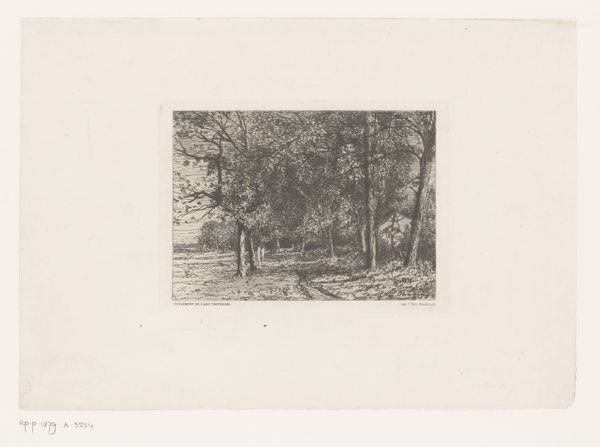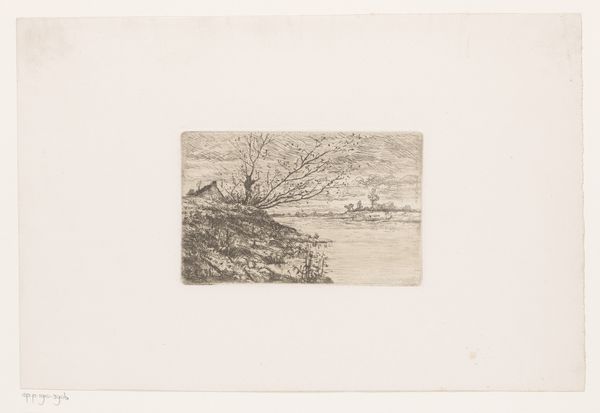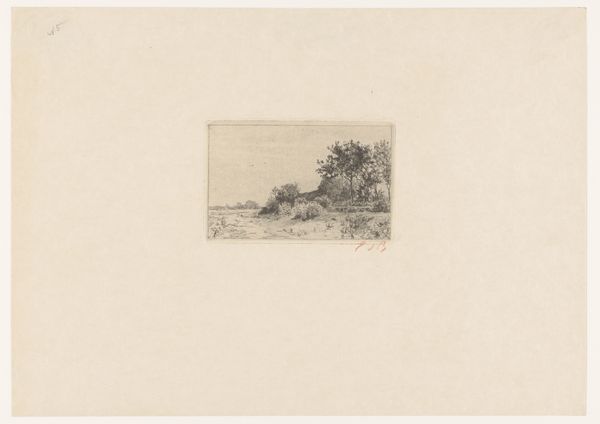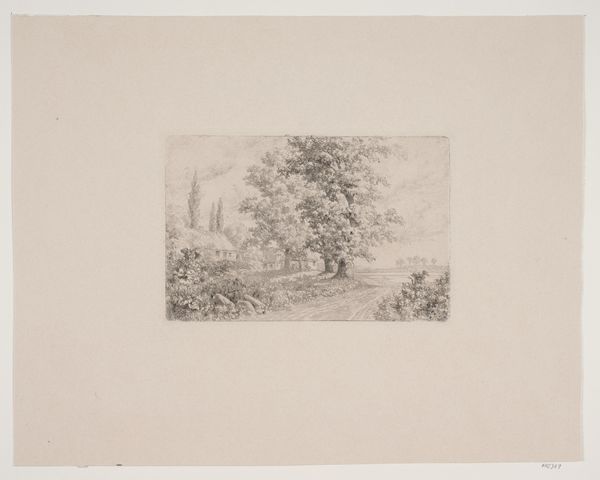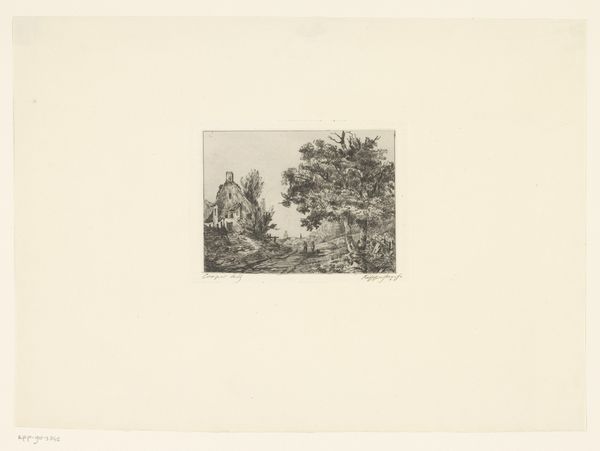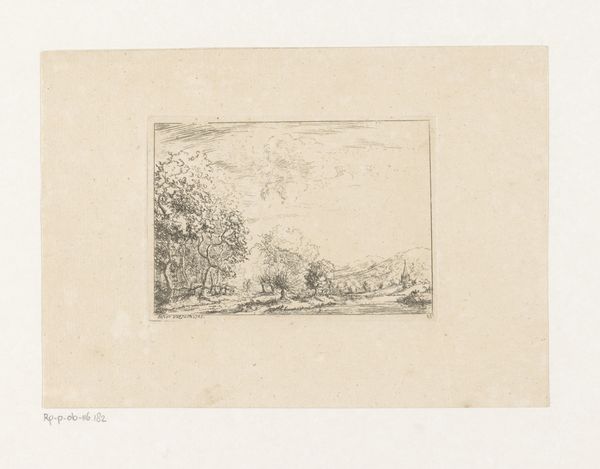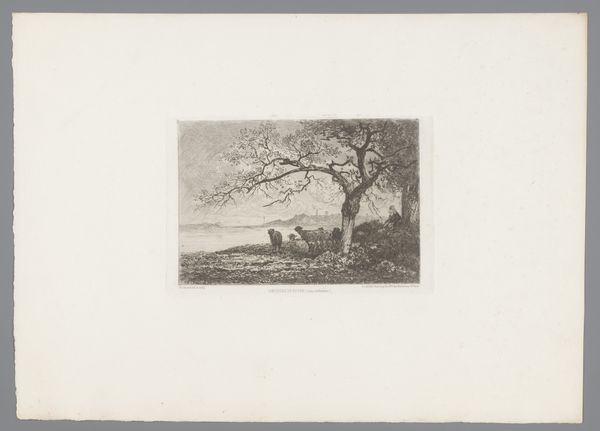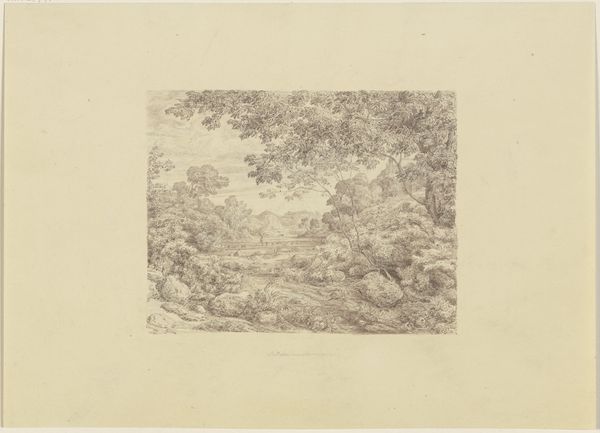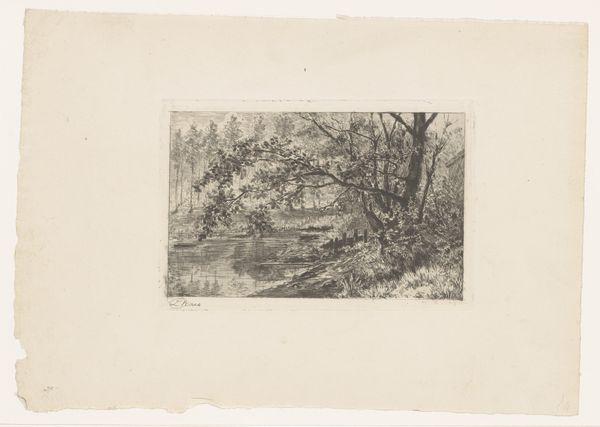
print, etching
#
lake
# print
#
impressionism
#
etching
#
old engraving style
#
landscape
Dimensions: height 128 mm, width 200 mm
Copyright: Rijks Museum: Open Domain
Curator: Editor: Looking at "Bomen aan de waterkant" by Emile de Baré, created sometime between 1865 and 1902, using etching techniques for the print... it feels like a fleeting glimpse of nature. What stands out to you most about this work? Curator: I see an exploration of labor and class through the very process of printmaking. The etching process itself – the acid biting into the metal plate, the artist's hand guiding the tool – speaks volumes about the material conditions of artistic production at the turn of the century. Who had access to these materials and skills, and what kind of audience was this image made for? Editor: That’s interesting! I hadn't thought about the social implications of the *process* itself. It seemed like a purely aesthetic choice. Do you see that connecting to the Impressionist style here? Curator: Absolutely. Impressionism wasn’t just about capturing light. Consider the new technologies for producing and distributing art en masse. How does etching as a replicable medium influence the art market and, by extension, challenge traditional hierarchies of art? Also, is the idyllic scene obscuring or commenting on a more complex relationship with nature – a resource exploited by industry? Editor: I guess I was focused on the trees and the lake... But now I’m thinking about the socio-economic context in which this print was created and distributed. It definitely shifts my understanding. Curator: Exactly. Looking beyond the surface allows us to unravel the threads connecting art, labor, and consumption in that era. What’s your takeaway after our discussion? Editor: I see that art isn't just about *what* is depicted but *how* it's made and who has access to both the making and the owning! Curator: Precisely! We've considered both the art and its context.
Comments
No comments
Be the first to comment and join the conversation on the ultimate creative platform.
